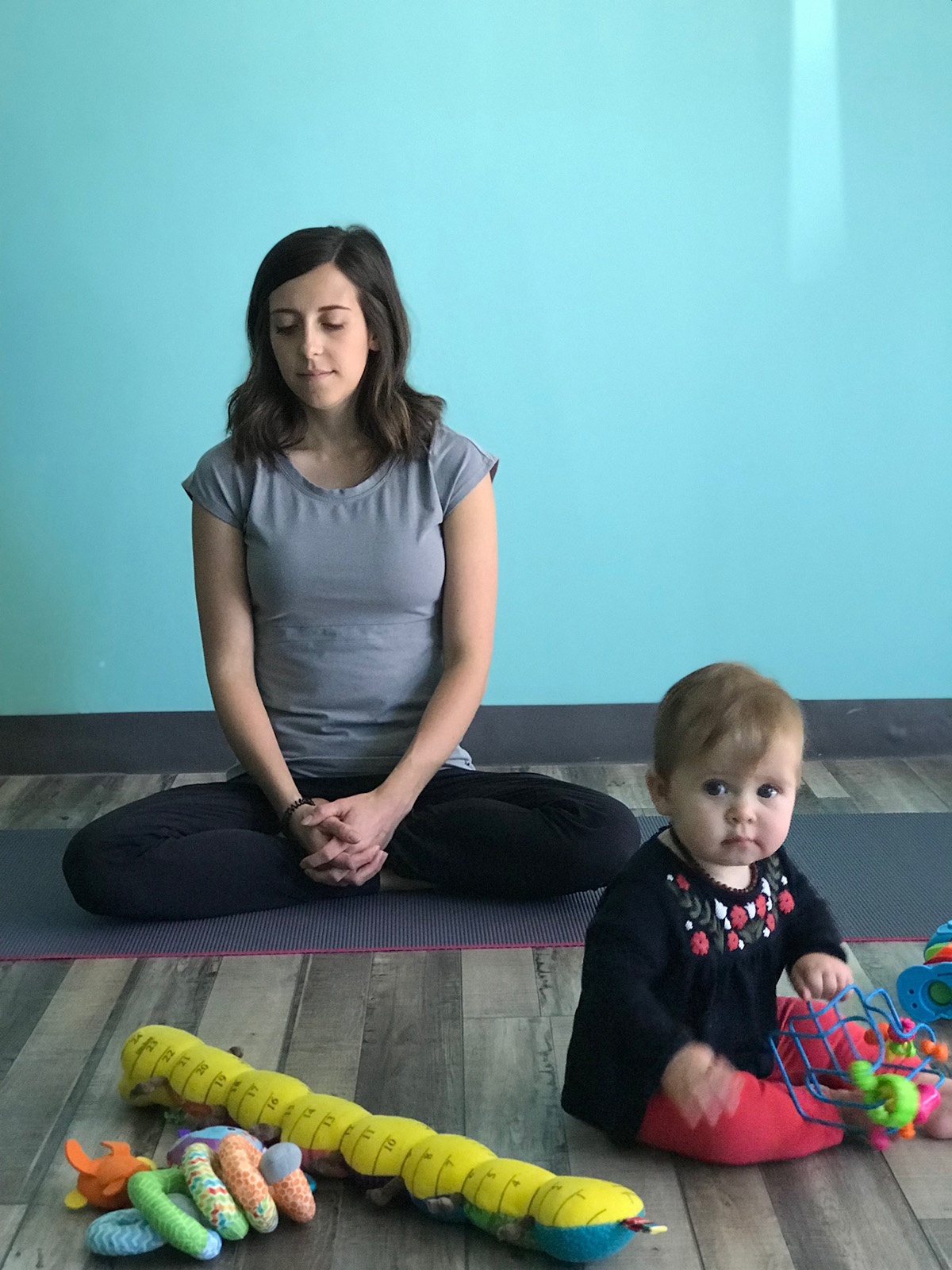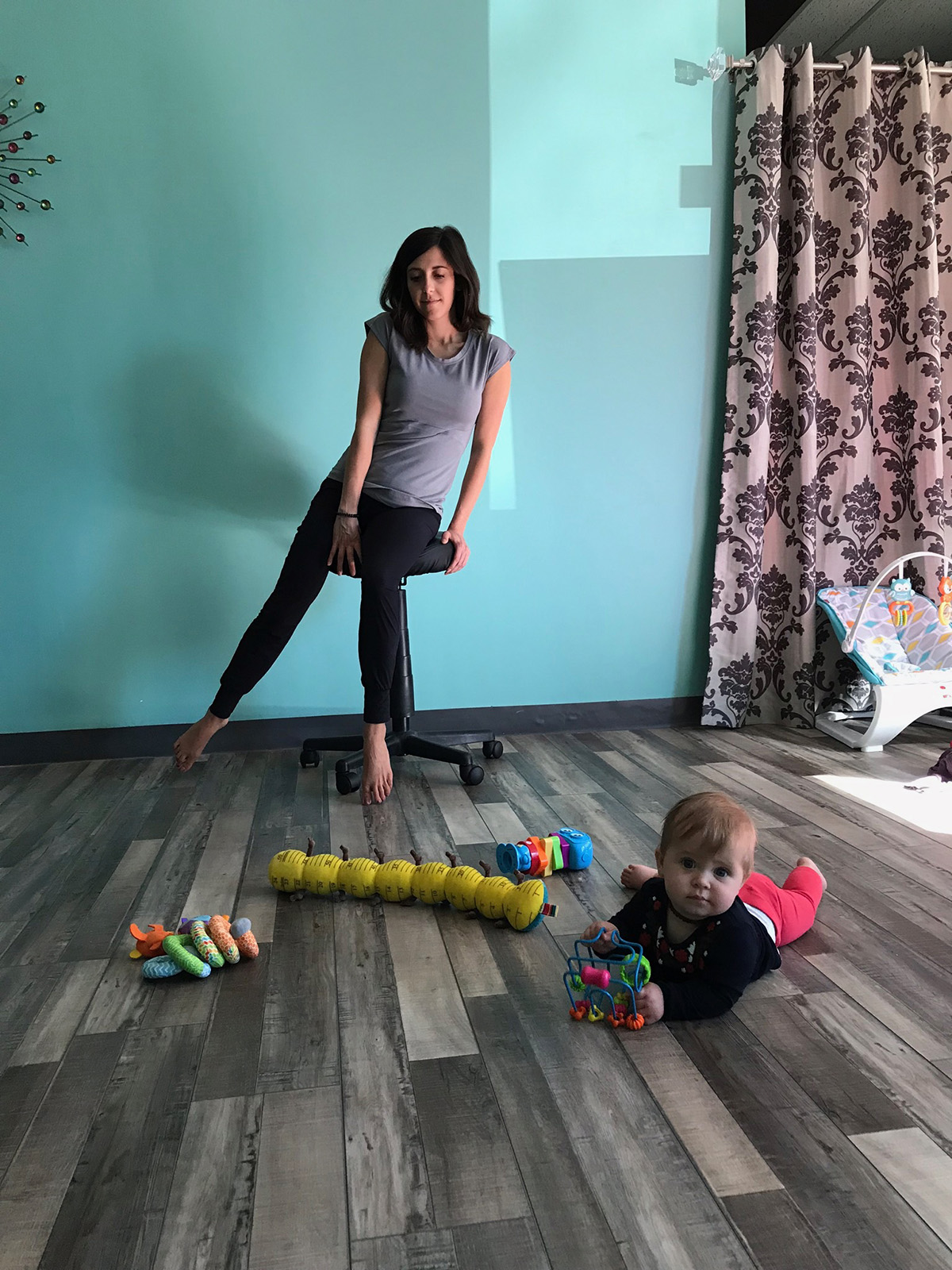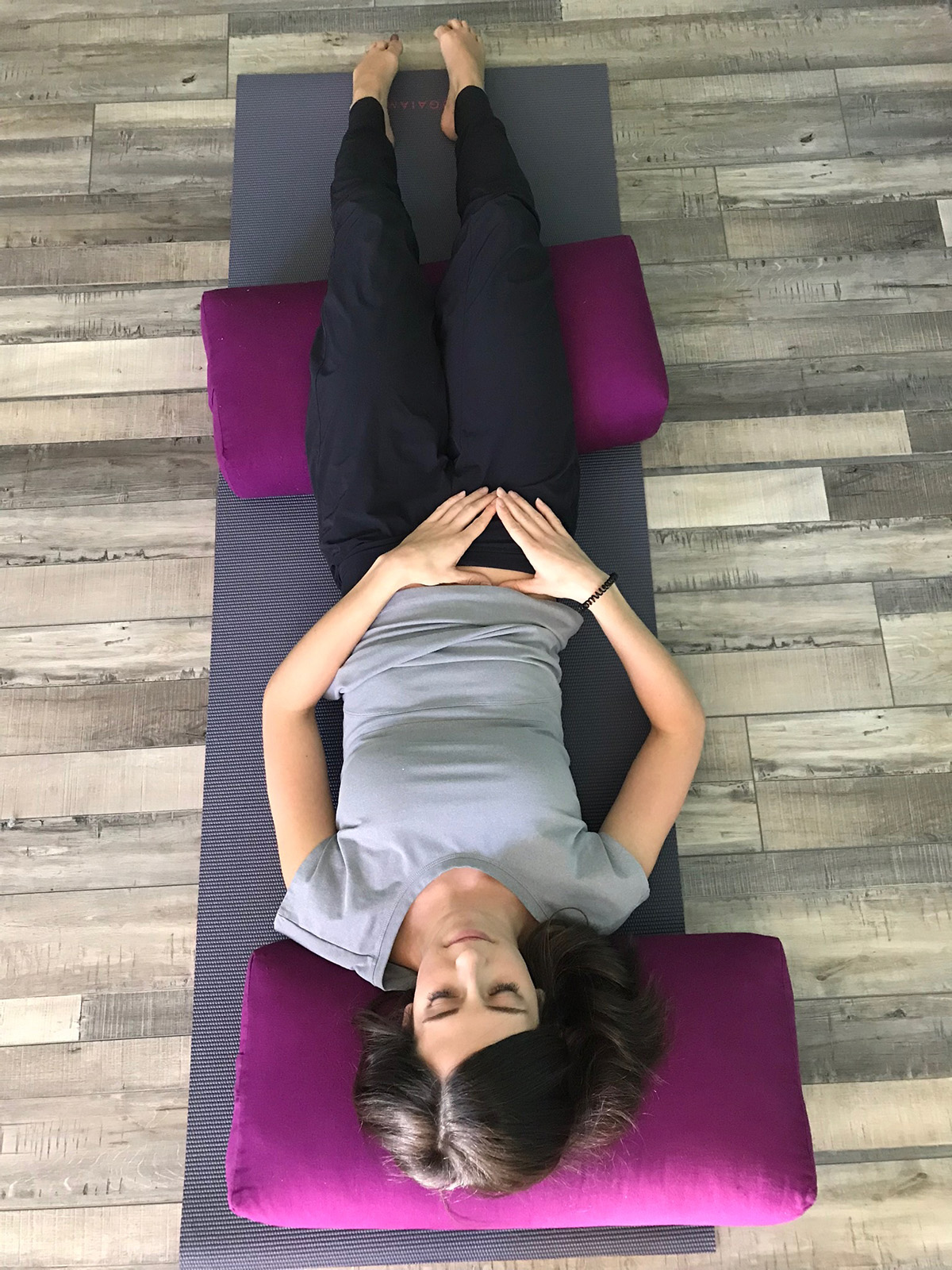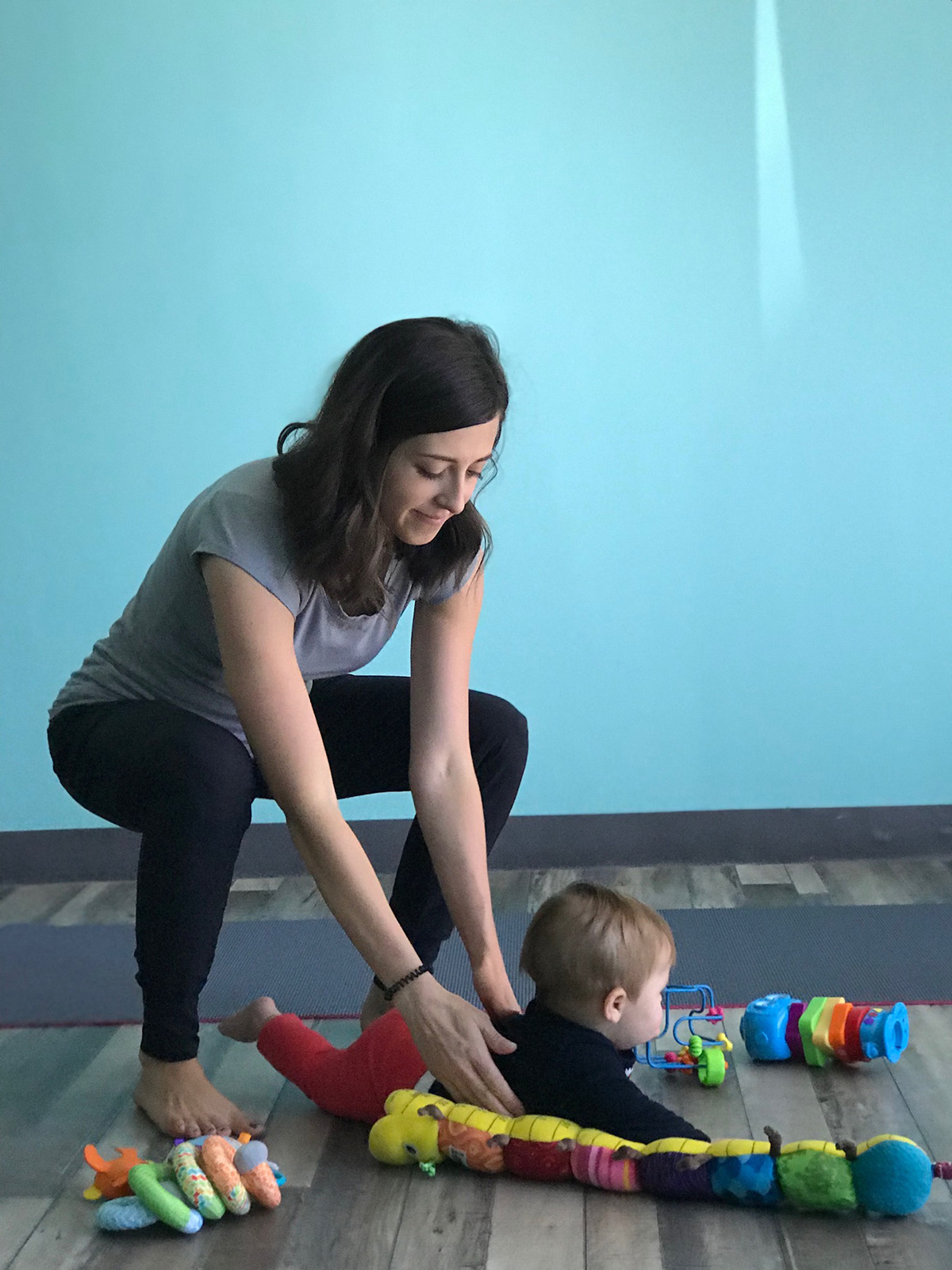
Have you just had a baby? Maybe they’re already off to college! Here are a few tips to help you get back into shape after giving birth.
Exercises for postpartum moms:
Learn to do proper Kegels by taking a deep inhale (imagining your ribs as an umbrella, trying to stabilize your stomach muscles and chest, trying only to move the ribs.) Take a deep inhale and release all of your breath and imagine you’re about to pick up a blueberry from the chair you are sitting on, with your deep inhale imagine picking it up.
As you exhale slowly put the blueberry back down imagining a flower in blooming on to the chair to place the blueberry back down. This exercise will help with incontinence (urinary, sexual and bowel) as well as help to strengthen any diastasis recti splitting.

Here is another type of pelvic floor exercise where you need a chair to sit on. Make sure your feet do not touch the floor. Sitting on the edge of a stool or higher chair let one leg hang off. Imagine your pelvic floor has the hands of a clock on it 12, 3, 6, 9. Now imagine you’re squeezing onto that number just like your blueberry while slightly lifting the leg that is dangling, then switch sides. Do this a few times and in both directions. Practice those difficult movements while doing this like pretending to cough, sneeze, laugh while contracting to make sure you’re able to do it without “leaking” and it will build on your pelvic floor strength.
This one will help reset your lower back from birth trauma. Sitting on the floor you should feel bones touching the ground on both sides. They may not feel even, which is generally the problem with low back pain. We get this because soon after we give birth we often hold a child on one side more than the other hiking our hips.
Legs should be straight out in front of you as relaxed as you can get them (if your hamstrings are tight do a slow deep stretch by leaning forward and alternating gas pedal motions with your feet. Now that you’re warmed up you’re going to do a “bum” walk where you can use those bones you’ve been sitting on and walk on them. 5 steps forward then 5 steps back and reset. Do this a few times until you feel it has been loosened or before it gets sore. DO NOT do this exercise before 6 weeks postpartum.
Here are tips on how to properly sit up and lay down after giving birth at any point from day one and forever. Sometimes we take for granted that we had children many years ago, but stretching out parts of your body and having another human come out of you never really goes away completely. To maintain and ensure proper back and abdominal support there is a safe way you should get up from lying down as well as lying down itself, and it’s not just flopping back or sitting straight up.
You must sit down, put the arm on the surface you’ll be laying on that you want your head to be down and bend your knees to the side where you want your feet to lay. Then, slide your arm up as to slowly lower yourself down. This technique will save you many pulled muscles (inside and out) and many trips to the doctor if consistent and used properly. It’s called the “sit and slide.”
Knowing when to do these exercises is key, you should never do any sort of unusual or new activity before 6 weeks postpartum especially without doctors approval.
If you’re having serious concerns that are worrying you more than normal, you should see a Pelvic Physiotherapist first to be assessed then continue treatment as needed. Usually, a Pelvic Physiotherapist will refer you to a postpartum massage therapist who is certified in these techniques specifically to complement their treatment. These people are hard to find, so you can ask them for a referral or ask your regular massage therapist if they know anyone.
Ask your massage therapist to work on your adductor muscles, which are attached to the pelvic floor and will help release the entire muscle even if not specifically trained to get close to that area. The obturator internus is also important and best reached side lying.

If you have a split in your abdomen otherwise known as diastasis recti you will need some fascial work done on your lower abdomen especially if that is where the split is or if you’ve had a caesarian Section so the scar can be loosened, this can also be done on your own by crisscrossing your fingers over your scar (after it has fully healed and closed up completely) and softening up the tissue underneath. This does not have to be a deep technique and should feel like slight burning, not necessarily painful.

I hope these have been helpful tips, remember to be safe and know your body. Do not cause further pain to your already postpartum body, do what you can as these small muscles are not the ones we typically work at the gym so they can be affected very easily. Baby steps.
Don’t forget to follow us on Twitter, Instagram, Pinterest, and Facebook!
 Contributor
Contributor
Rebecca Kitchen is a Registered Massage Therapist and Acupuncturist. She is trained in myofascial release, doula support, contemporary cupping therapy, and postpartum care. She has worked extensively in physiotherapy and naturopathic clinics, a hospital and with a chiropractor, and is aware of how a holistic approach between professions can benefit each patient. Her practice is in Woodstock, ON Canada, where she lives with her husband Greg, and their toddler Harvey. You can follow her on Facebook here.
Original content © 2018 Super Simple. Not to be reprinted without express written permission. Terms of Service.

